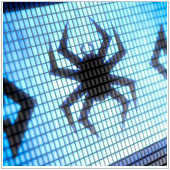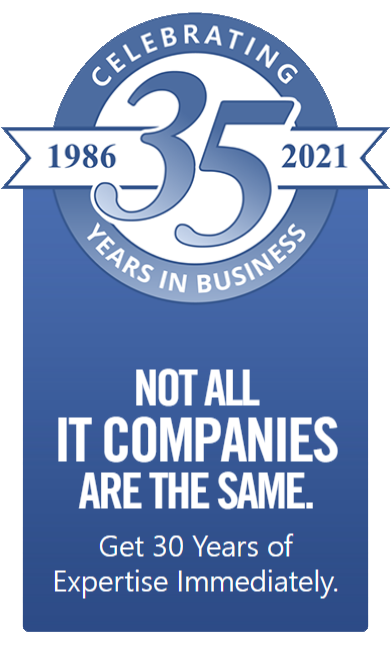Android tablets have many popular features. That’s what makes them so useful to business owners, managers and employees. One of the more important functions is the ability to set a password, pin or slide combination to unlock the device. While this is useful for keeping data secure, it isn’t that useful when you forget the password.
If you forget the password or combination to unlock your Android tablet there are a number of steps you can take.
Before you forget your password
As you probably know, Android is heavily integrated with Google. When you first turned on your tablet, you were likely asked to sign up for, or link, a Google account to your device. If you didn’t you should do so as it will make unlocking your tablet easier if you forget the password or pattern.
You can assign an account by going to Settings and scrolling down to Accounts and selecting Add account. Press on Google and if you already have a Google account tap Existing and enter the relevant information. Pressing New will allow you to sign up for a new account.
Try, try again!
If you enter your combination, but just can’t remember it, try again another four times. You will be locked out for thirty seconds, then allowed to try again. During the countdown, you should see a button at the bottom of the screen saying Forgot Pattern? Tap this and enter your Google account information – email address and password. When you do, you should be taken into the tablet’s password reset screen.
Buttons!
On some tablets, there is a ‘Safe Mode’ that you can boot into. This should boot it into a simplified home screen with no access to apps, but access to settings, where you may be able to reset the screen lock. While this won’t work on all devices, it’s worth a try.
From the lock screen, press the Power button to get the on/off window. When this pops up, either press and hold the Power off (on the screen), or press and hold the physical button, and it should display an option to boot into safe mode.
On other Androids you may be given an option to Reboot. Try pressing on that for a few seconds and it should bring up the option to reboot into safe mode.
Last ditch effort!
If the above tips still don’t work, you have one final option: Factory reset.
Conducting a factory reset will completely wipe your tablet’s memory, and return it the way it was when it came out of the factory. If your device has a removable memory card, it would be a good idea to turn it off and remove the card before resetting, as there is a chance the files stored on here will also be deleted.
Here’s how to execute a factory reset:
- Turn your tablet off and remove the SD card, if there is one.
- Press and hold the combinations below until you feel the device vibrate:
- Power button + Volume up and down (if there is a physical Home button)
- Power button + Volume up + Home button (If there is a physical Home button)
You should either see the droid (green robot) with his stomach plate open, or the Android Recovery screen. If you see the droid, press the volume buttons until you see Recovery mode above his head, and tap the Power button. This should bring you to the Recovery screen.
From here, press volume down until Wipe data/factory reset is highlighted. Press the Power button and it should start the rest sequence.
Another option is to either bring it into the store where you bought it from, and see if they have a way to help, or you could contact us for assistance.

CryptoLocker is the latest in a long line of destructive malware programs that have businesses worried. While this is one of the more destructive to come around, you can actually prevent this virus from infecting your systems. One of the best ways to do this is to educate yourself and your employees on steps you can take to reduce the chances of becoming infected.
Here are five tips you can share with your employees about how to keep systems free from malware.
1. Don’t turn off or stop your anti-virus scanner
There is little doubt as to the usefulness of your anti-virus scanners. These are installed specifically by companies and IT departments the world over in an effort to keep systems free from viruses and malware. Because there are always new pieces of malware being developed and released, the companies that run the antivirus scanners often keep an up-to-date as possible database that is consulted when the scanner is running.
It is these databases that companies push to you in weekly, or daily updates. Therefore, it’s a good idea to not only keep your virus-scanner on, but also up-to-date, as the chances of it picking up newer and more serious malware are higher.
If your scanner attempts to run during business hours, some systems may slow down. Why not change the time this scan runs to when you aren’t at your desk, say after 5:00 pm, or early in the morning. Working with an IT partner to schedule this could really help.
An important factor to remember is: If you don’t run your anti-virus scanner, or turn off your scanner, the chances of your computers being infected increases exponentially.
2. Watch what you download
One of the more common ways malicious software makes it onto computers is through downloaded files. That Facebook toolbar that a website is advertising as a must-have, or the file that must be downloaded in order to watch a movie online may actually be teeming with viruses.
Therefore, you should only download files from websites that you know are secure and offer legitimate files. And, before you download anything ask yourself, “Do I really need this, and will I really use it?” If you are unsure, check with a colleague, or reach out to your IT partner.
3. Study email attachments closely
Another common way malicious software and viruses spread is through email attachments. Sometimes an email account has been compromised and a hacker is sending emails to users with the virus attached, or the host system has been infected and the virus is essentially sending itself. Regardless of how the email is being sent, you should be wary of all email attachments.
Before you open ANY attachment, verify that it is actually referenced in the email, it is the file referenced, and the name is logical. If you see an email that states a document or file is attached, take a look at the name of the attached file. If it ends in .exe or .dmg, this is a program and likely a virus, and should not be opened. You should also look at who is sending the email too. If you don’t know the person it is recommended that you do not open the attachment. If you are unsure, try contacting the sender in another email.
4. Avoid using shared disks when possible
While external hard drives and thumb drives may be incredibly useful, viruses can actually be spread by them. For example, if an infected file is on a USB drive and is plugged into a system, this can actually infect the system when the file is opened.
If you do use these drives, many virus scanners can check them. So, when you plug in a drive, before you open any files or the drive itself, right click on it and you should see an option to scan the drive with your virus scanner. If not, you can likely do this from the virus scanner itself. This could take time, but it will help keep your systems secure.
5. Ask yourself whether you really need to have an administrator account for Windows
On many systems, when you set up a new user, you can set an account to be the administrator of that system. Administrators automatically have the ability to install programs, change settings and even create new accounts. If you don’t need to change your computer’s settings, or install programs then you likely don’t need to have an administrator account.
This could be a great way to minimize virus infections simply because these viruses need to first be installed. If you can’t install programs or even download them, then your chances of being infected are lower.
Looking to learn more about how you can protect your computers? Contact us today as we may have the perfect solution that will not only keep your systems secure, but also free from any malicious software.
Published on 4th March 2013 by Jeanne DeWitt.


